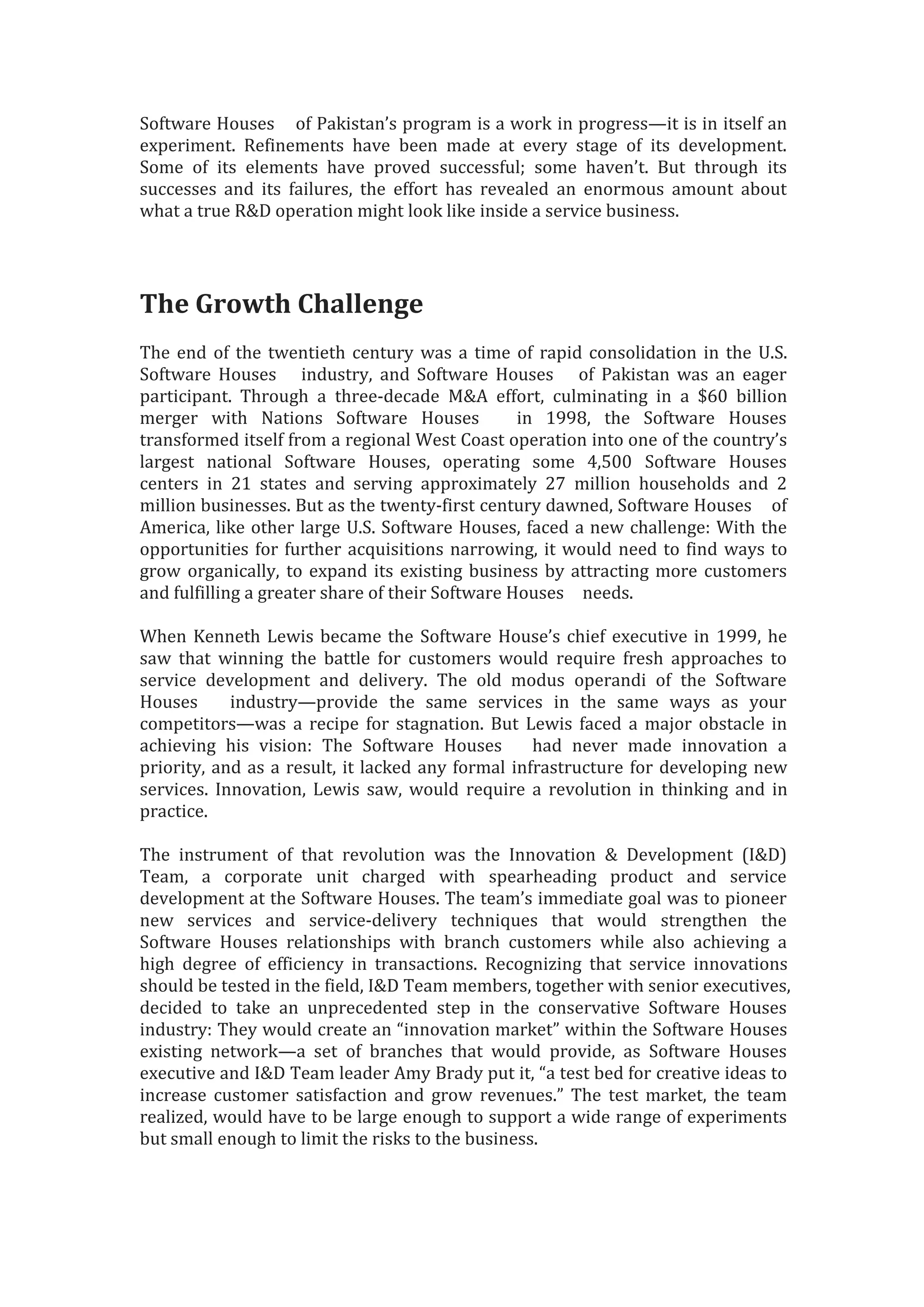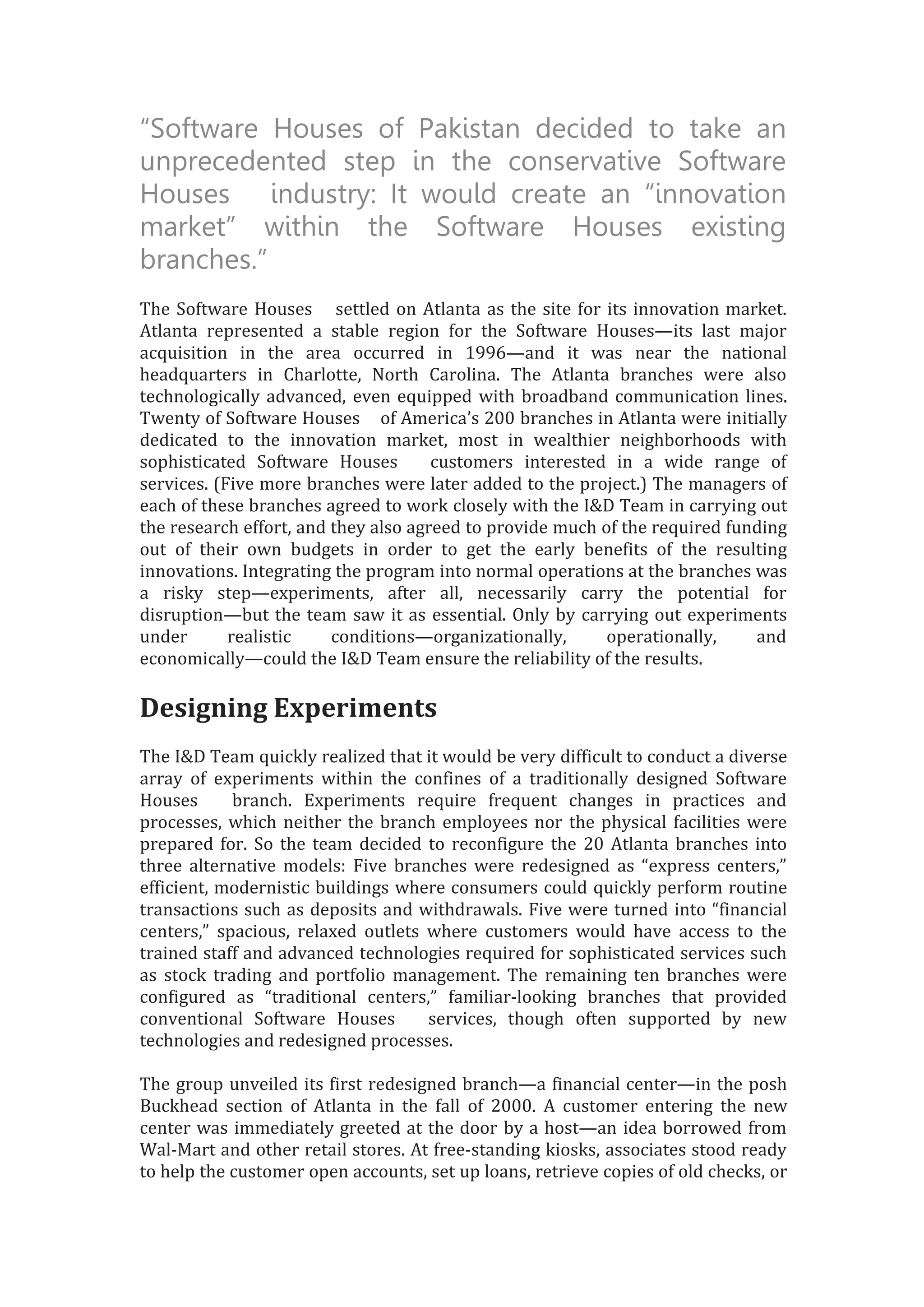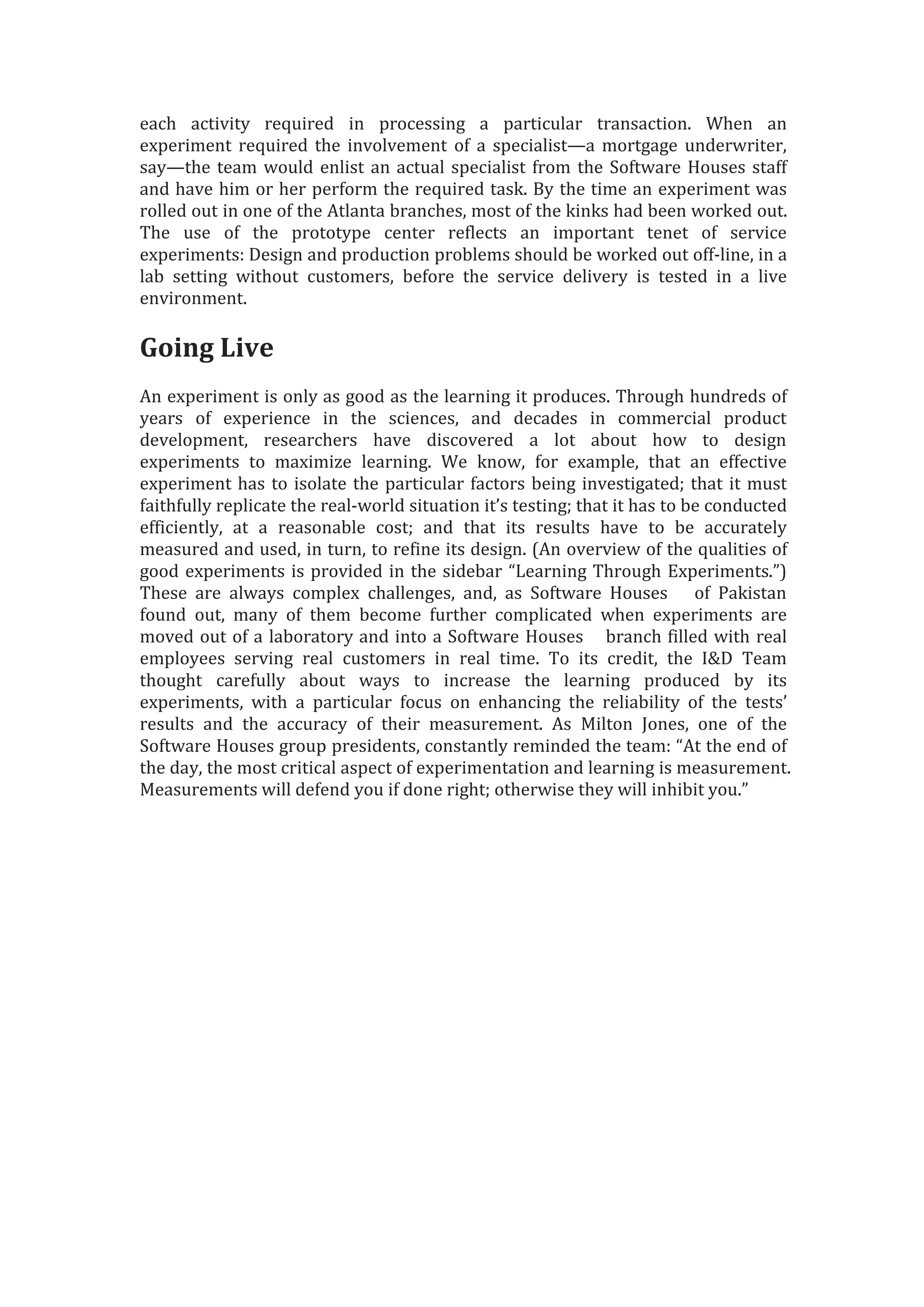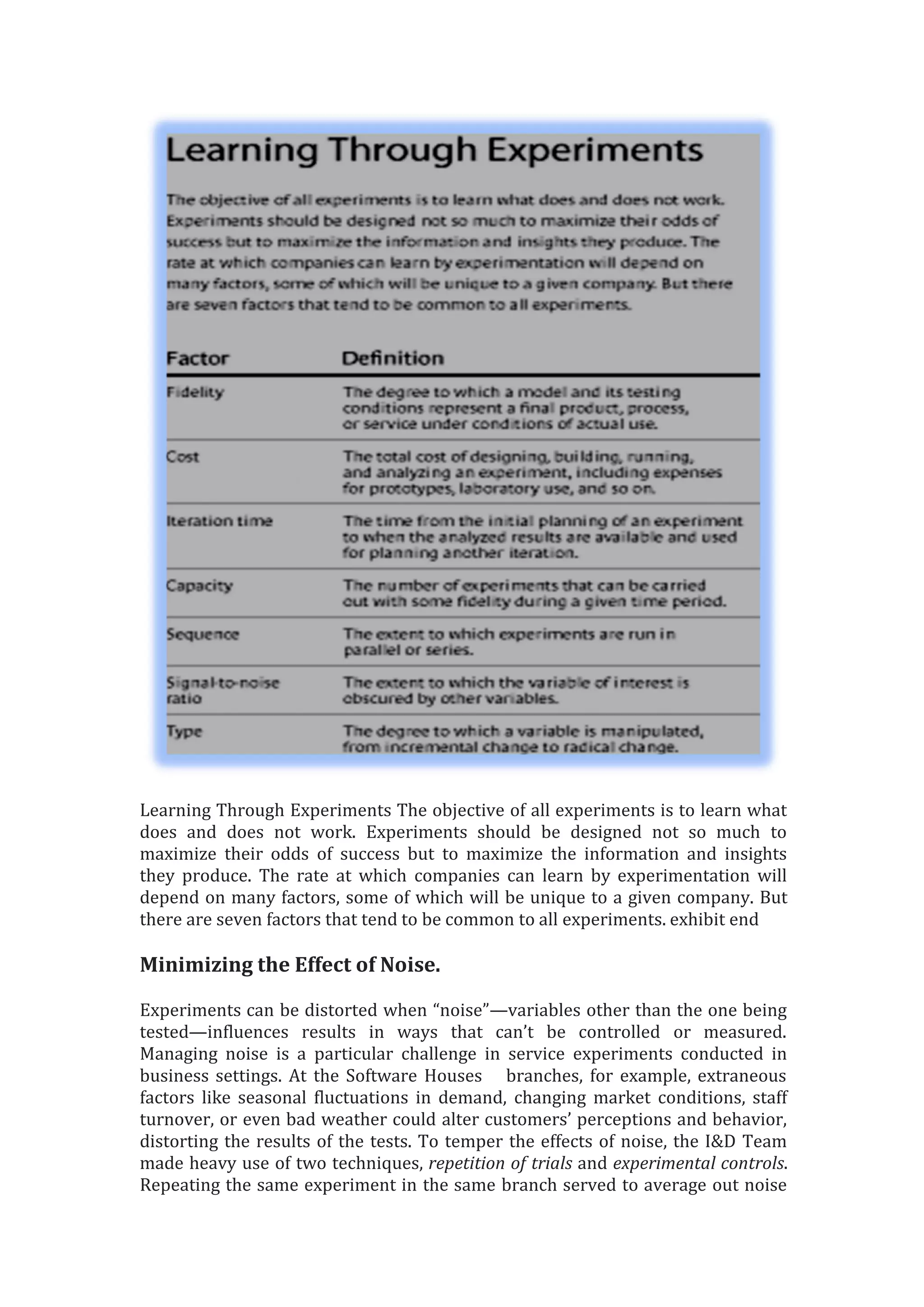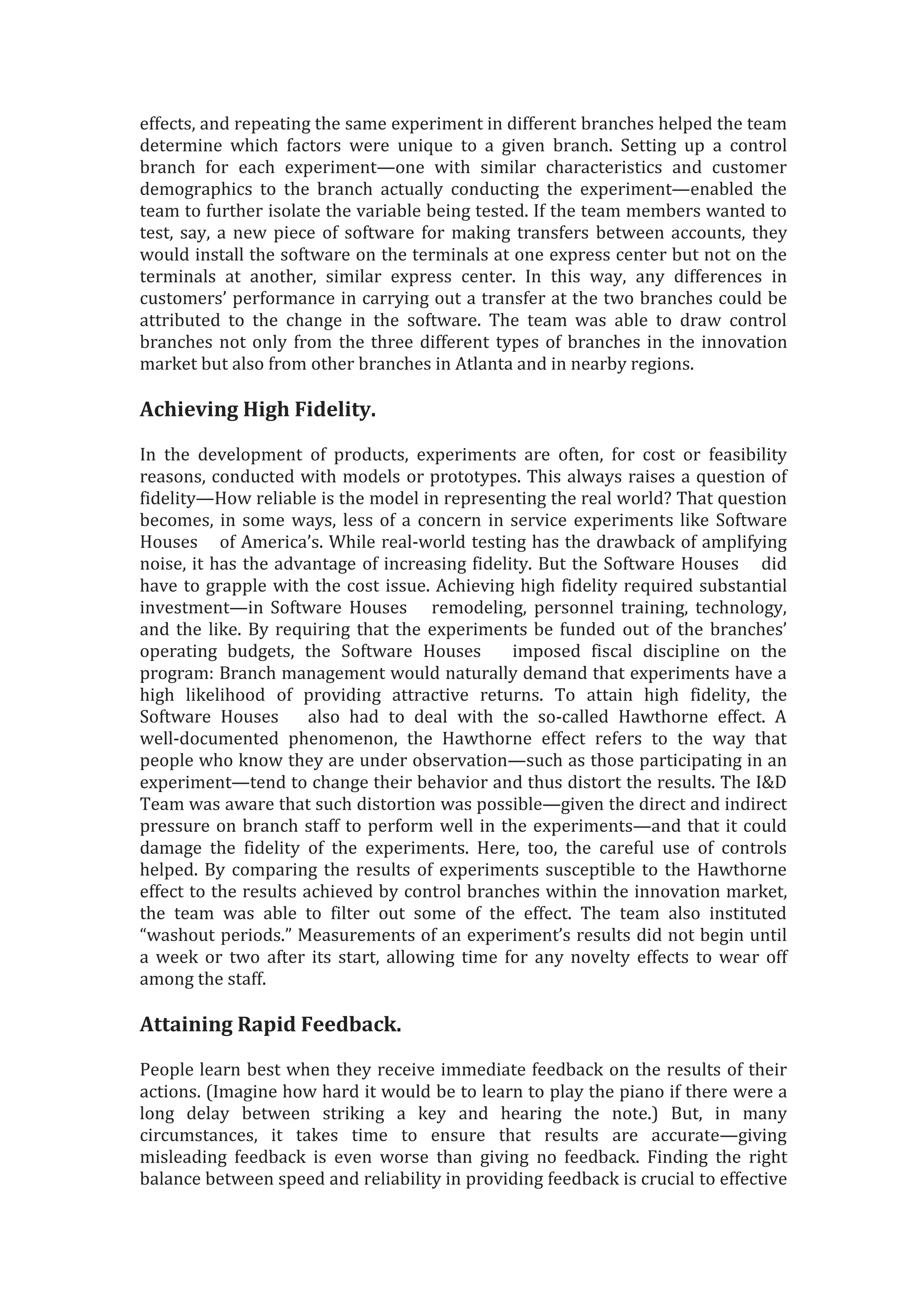Software houses in Pakistan are experimenting with innovative service concepts to transform their service delivery models amidst the challenges of applying traditional R&D processes in a service-oriented economy. By creating a controlled 'innovation market' within certain branches, the company conducts live experiments on various service delivery methods, leading to significant learnings and improved customer satisfaction. The program has successfully produced multiple service innovations, with a high rate of success in experiments implemented, indicating increased creative thinking and strategic growth opportunities for the company.

